It’s the time of year again when I can spot patches of brilliant red as I drive through the countryside! Somehow, it feels as though the poppy season is a little later than usual this year, but perhaps that’s my imagination…
A few years ago, there was the most brilliant display of poppies just outside the hamlet of Cabezac. Something had been grubbed up in a field and the following spring saw an explosion of poppies!
Papaver rhoeas is the latin name of the common poppy, also called field poppy, Flanders poppy or red poppy. It grows particularly well in recently disturbed soil, and hence it’s association with the churned up WWI battlefields of northern France. In Cabezac, the field had been ploughed, perhaps late the previous year or earlier that year, in preparation for a cereal crop or some such. If any seeds had been sown then, they had had no chance against the poppies – I saw no evidence of a struggling crop.
The field was so spectacularly red that many people stopped their cars by the side of the road and hopped out to take a picture or two. The snails on the post didn’t seem to be particularly fussed about the poppies or the passers-by.
I walked around the edge of the field, careful not to step on any poppies! I found this beautiful thistle which looks wonderful against the red background, don’t you agree?
There were also some marguerites:
Some of the visitors walked right into the middle of the field, perhaps thinking of Claude Monet’s Coquelicots (Poppy Field) form 1873, which shows a lady with a parasol and a child walking through a field. It’s a painting which has been reproduced countless times – I’m sure you’ve seen it somewhere! The original hangs in the Musee d’Orsay in Paris.
Nobody carried a parasol the day I took the pictures, but there were many mobile phones in evidence!! 🙂
I’ve teased you long enough with my descriptions – here, finally, is the field in all its glory:
Something to think about: a single poppy plant can produce up to 400 flowers during its life cycle! If only some of the poppy flowers in the field produce seeds, there is a good chance that there will be another amazing display before too long.
And another thing to remember: poppy seeds can stay dormant for a very long time, until the soil is disturbed once more…








































 What is it about humans that we love to look down on everything? To get up high, for a better view? The chill of vertige with the thrill of omniscience.
What is it about humans that we love to look down on everything? To get up high, for a better view? The chill of vertige with the thrill of omniscience. On a balmy February day, a friend and I went to the Passerelle of Mazamet, which has been on my bucket list for a moment. One of those things that’s too nearby to miss, but far enough that I never got around to it. The drive from Carcassonne to Mazamet takes nearly an hour. Longer if a nervous retiree from a distant department is ahead of you and slowing to a crawl around the curves but, with a bigger engine, speeding like an idiot on the rare straightaways, as if that makes up for anything.
On a balmy February day, a friend and I went to the Passerelle of Mazamet, which has been on my bucket list for a moment. One of those things that’s too nearby to miss, but far enough that I never got around to it. The drive from Carcassonne to Mazamet takes nearly an hour. Longer if a nervous retiree from a distant department is ahead of you and slowing to a crawl around the curves but, with a bigger engine, speeding like an idiot on the rare straightaways, as if that makes up for anything.  The $*%&ing driver ahead of us aside, the route was absolutely gorgeous. It goes up and up and up, and the vegetation changes to dense forest. There were signs about the pass being open, snow markers on the sides of the road, but we were in fleece jackets and during our hike had to take those off. A weird winter. It was 70 F here yesterday.
The $*%&ing driver ahead of us aside, the route was absolutely gorgeous. It goes up and up and up, and the vegetation changes to dense forest. There were signs about the pass being open, snow markers on the sides of the road, but we were in fleece jackets and during our hike had to take those off. A weird winter. It was 70 F here yesterday.

 The passerelle was inaugurated in 2018. It’s 140 meters (460 feet) long over the Arnette river and 70 meters (230 feet) above the ground. It’s free and open 24/7, but you’d be crazy to go after dark. We were glad to be there in February–plus it was lunch time and the French do one thing during lunch time: eat. So we had the place almost to ourselves. It would be much less fun in the heat of summer with a gazillion people on the narrow path. Even worse, a gazillion people on the passerelle. It can hold 42 tons, which is a lot of people, but even a couple of other people walking made it bounce such that I was glad I hadn’t eaten.
The passerelle was inaugurated in 2018. It’s 140 meters (460 feet) long over the Arnette river and 70 meters (230 feet) above the ground. It’s free and open 24/7, but you’d be crazy to go after dark. We were glad to be there in February–plus it was lunch time and the French do one thing during lunch time: eat. So we had the place almost to ourselves. It would be much less fun in the heat of summer with a gazillion people on the narrow path. Even worse, a gazillion people on the passerelle. It can hold 42 tons, which is a lot of people, but even a couple of other people walking made it bounce such that I was glad I hadn’t eaten.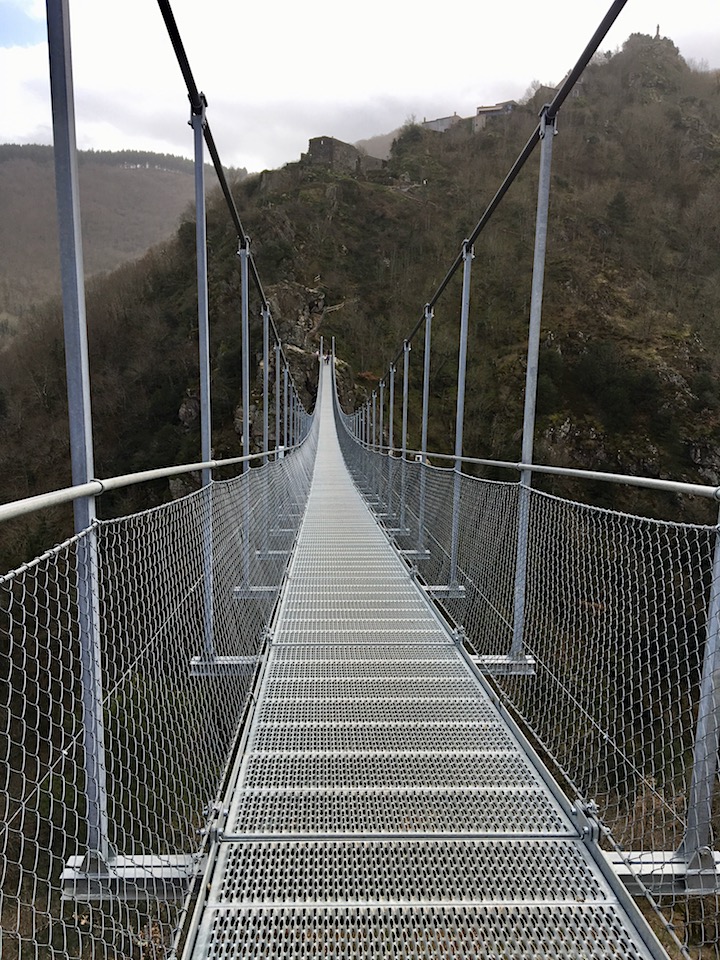

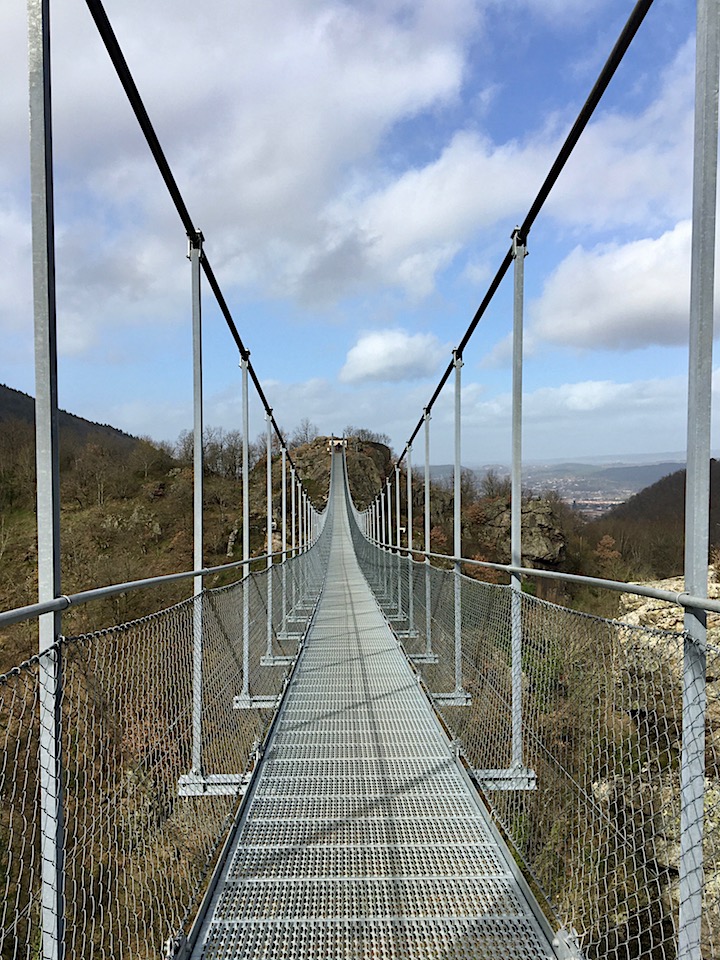
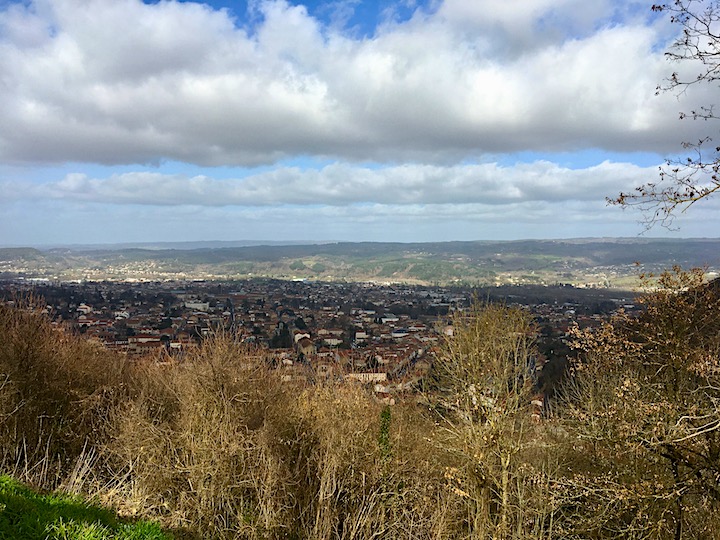


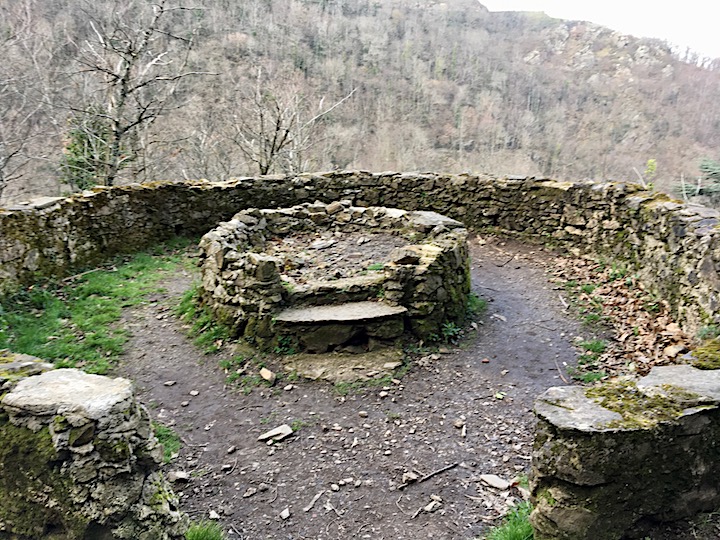



 The descent, on a path with an 8% grade, was via the Jardins Cormouls Houlès, which date to the middle of the 19th century, with interesting towers and stone walls. First we checked out the ruins of the church of Saint-Saveur, which dates to the 1100s.
The descent, on a path with an 8% grade, was via the Jardins Cormouls Houlès, which date to the middle of the 19th century, with interesting towers and stone walls. First we checked out the ruins of the church of Saint-Saveur, which dates to the 1100s. 


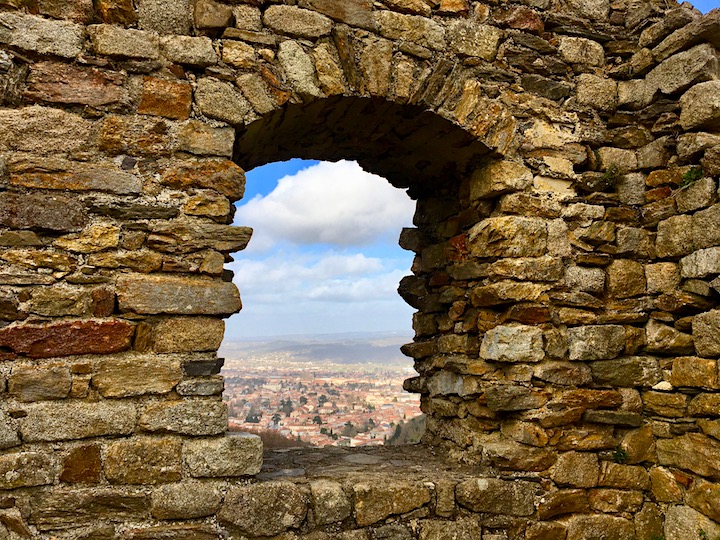 The church was built on a hilltop, for views. Up in the air. Like life right now, waiting to see where things will land, trying not to fall.
The church was built on a hilltop, for views. Up in the air. Like life right now, waiting to see where things will land, trying not to fall.


























